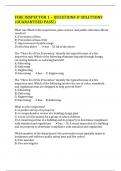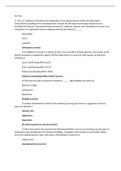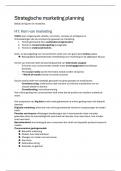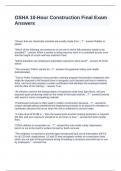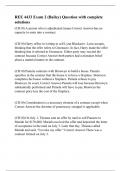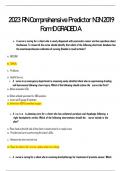Case
Case study of an elderly person with Alzheimer's Disease
- Module
- Applied Pathobiology
- Institution
- Goldsmiths, University Of London (GUL)
A descriptive case study of an elderly women that shows symptoms and the GP decides to carry out a test (APOE Test). The document has a detailed explanation about clinical signs, outcome of APOE test and molecular pathways and mechanism associated with the disease, including the histopathology and...
[Show more]





